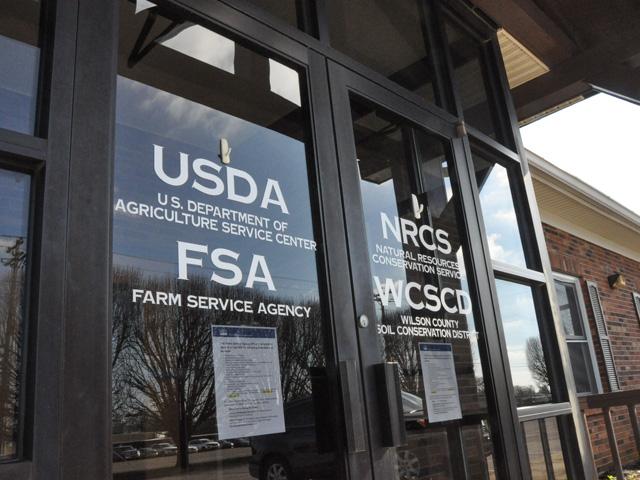White House Budget Plan
President Biden's FY 2024 Budget Pitches Tax Hikes to Help Offset Spending Proposals
ORLANDO, Fla. (DTN) -- Farm programs are left unscathed from budget cuts under President Joe Biden's fiscal year 2024 budget proposal, but the president's plan calls for increasing corporate taxes and income taxes on higher-income earners to shave the growth of the national debt over the next decade.
In agriculture, the White House does not offer any proposals to cut crop insurance or increase producer premiums, which have been common in the past. The USDA budget for farmers largely remains pat, waiting on the next farm bill. But the White House did propose to increase spending on USDA conservation programs by $208 million and add $400 million to spending on rural broadband, as well as reestablish a crop insurance cover-crop program for farmers.
Under the cover-crop plan, the Biden administration calls for reviving and extending the crop insurance Pandemic Cover Crop Program -- renaming it the Cover Crop Incentive Program -- which would cost $950 million over 10 years. The program would offer a $5-per-acre incentive for farmers to use cover crops, which USDA stated, "will benefit the environment and improve climate resilience."
That proposal is largely a pitch by the administration to add into the debate about the next farm bill.
Robert Bonnie, undersecretary for Farm Production and Conservation, told DTN at the Commodity Classic event that USDA wanted to bring back the cover-crop program, which had helped producers pay for cover crops on roughly 11 million acres in the two years the incentive was funded.
"We think these are the kind of tools that can drive innovation for producers to use cover crops," Bonnie said. "There is just strong support in the administration for these types of voluntary, incentive-based approaches."
Zach Ducheneaux, the Farm Service Agency administrator, also speaking at Commodity Classic, was asked by a producer about how to increase loan aid to beginning farmers. Ducheneaux pointed to legislative proposals spelled out in the budget seeking to double micro-loans to $100,000 and eliminate restrictions on the number of years farmers can access USDA operating loans.
"We are taking a look at our loan programs," Ducheneaux said.
P[L1] D[0x0] M[300x250] OOP[F] ADUNIT[] T[]
On a press call, USDA staff also highlighted "firefighter reform" in the Forest Service. The budget requests $569 million to boost pay for the wildfire firefighter workforce, including helping with housing assistance.
White House budget proposals are often "dead-on-arrival" in Congress when another party controls the purse strings -- as is the case with Republicans holding the House. Still, the budget sets priority goals for the administration and budget negotiations with Congress going forward.
Under the president's plan, the national deficit over 10 years would increase by $17 trillion, but the White House states the budget would "cut deficits by nearly $3 trillion" because the current budget baseline projects deficits will grow as much as $19.9 trillion over the next decade.
Among some of the big proposals in Biden's budget, the White House calls for raising the corporate tax rate from 21% to 28%. For multinational companies, the budget calls for raising the tax rate on foreign earnings to 21% from 10.5% as well.
The White House also proposes increasing the top marginal tax rate on individuals making over $400,000 per year to 39.6% from 37%, the rate set in the Trump-era tax cuts. The budget also calls for raising the Medicare tax from 3.8% to 5% for people earning more than $400,000 a year.
Among other tax changes, the White House plan calls for raising taxes on estates and generation-skipping transfer tax rules for certain trusts. Another proposal would revise rules for valuations of certain property as well.
The White House stressed that the budget plan would not increase taxes on anyone earning under $400,000 a year. Republicans countered Biden was rehashing "failed tax and spend" policies that led to high inflation and deficit spending.
"President Biden just delivered his budget to Congress, and it is completely unserious," tweeted House Speaker Kevin McCarthy, R-Calif. "He proposes trillions in new taxes that you and your family will pay directly or through higher costs. Mr. President: Washington has a spending problem, NOT a revenue problem."
In discretionary spending, Biden's budget calls for boosting USDA's discretionary budget by $3.8 billion, or 14.3% next year.
Given the strength of commodity prices over the past couple of years, USDA's budget projects spending just $69 million in fiscal year 2024 on the Agricultural Risk Coverage and Price Loss Coverage (ARC and PLC) programs. Dairy Margin Coverage (DMC) is projected to cost about $1.2 billion. Disaster programs at USDA are projected to cost about $1.41 billion.
In rural broadband, the budget notes USDA invested $2 billion for broadband programs provided in the Bipartisan Infrastructure Law for 2023. The budget provides $400 million for the ReConnect program, which provides grants and loans to deploy broadband to unserved areas, especially tribal areas.
In farm conservation programs, the budget provides $1.2 billion, $208 million above the 2023 enacted level, to increase conservation adoption and farm income through the Natural Resources Conservation Service (NRCS). The Inflation Reduction Act included $19.5 billion to increase enrollment in conservation programs over the next five years.
USDA's overall budget is projected to spend less, largely because the Supplemental Nutrition Assistance Program (SNAP) will see roughly a $31.6 billion decline in projected spending in FY 2024. That's because pandemic aid and extra benefits for SNAP recipients have come to an end this month. SNAP is also projected to see a decline of about 1.2 million people on the program over the next year.
USDA budget proposal: https://www.usda.gov/…
White House budget proposal: https://www.whitehouse.gov/…
Chris Clayton can be reached at Chris.Clayton@dtn.com
Follow him on Twitter @ChrisClaytonDTN
(c) Copyright 2023 DTN, LLC. All rights reserved.



